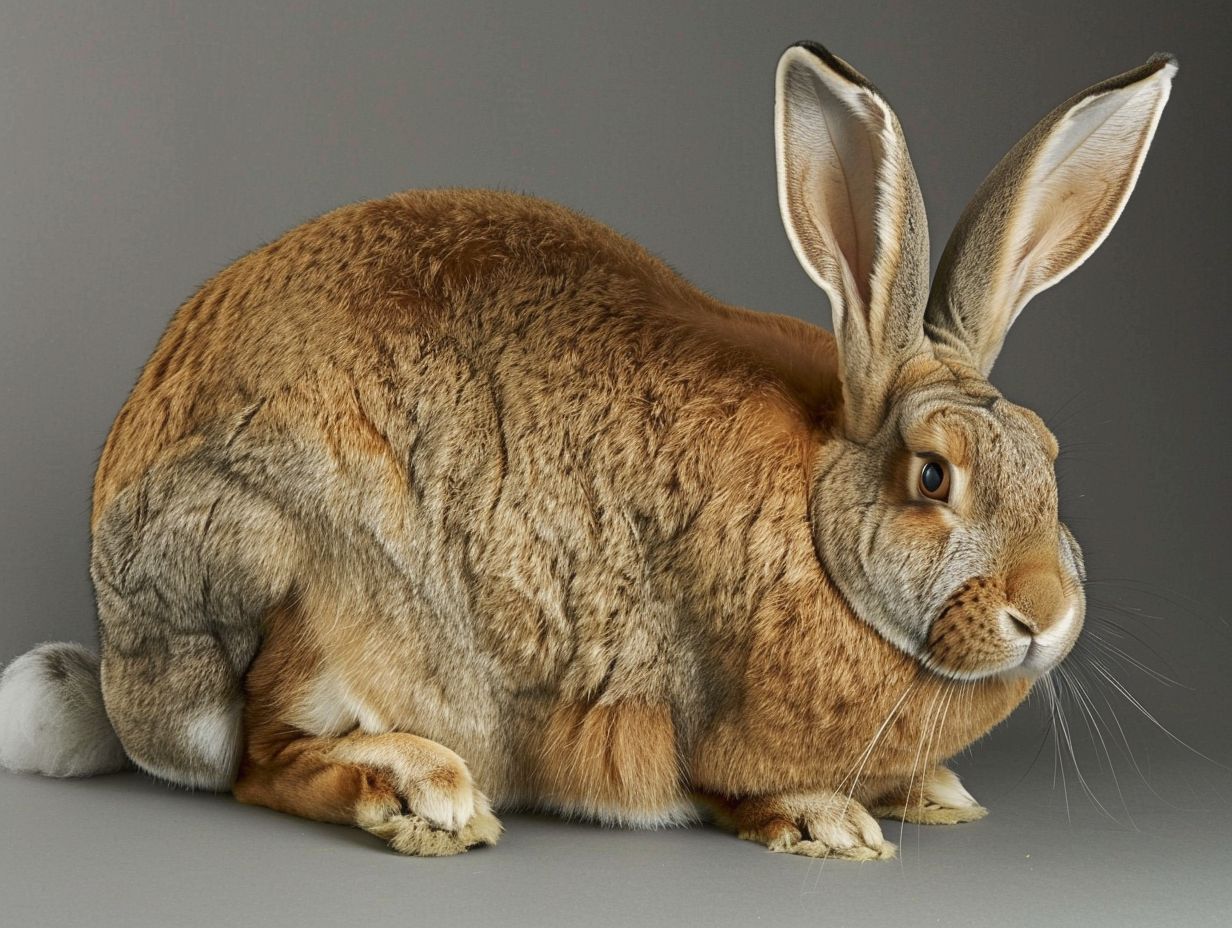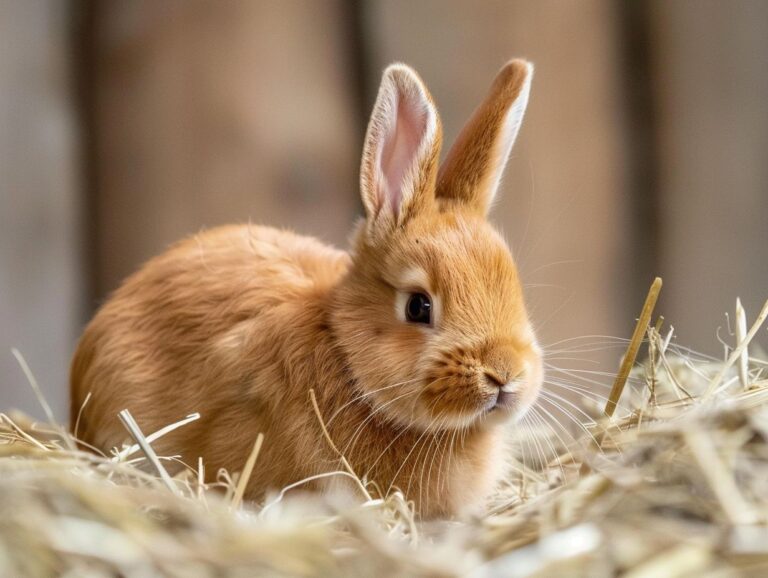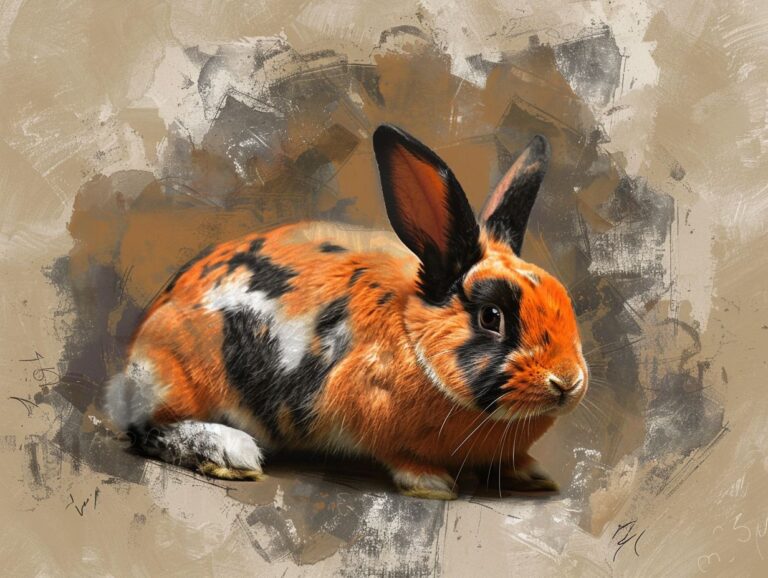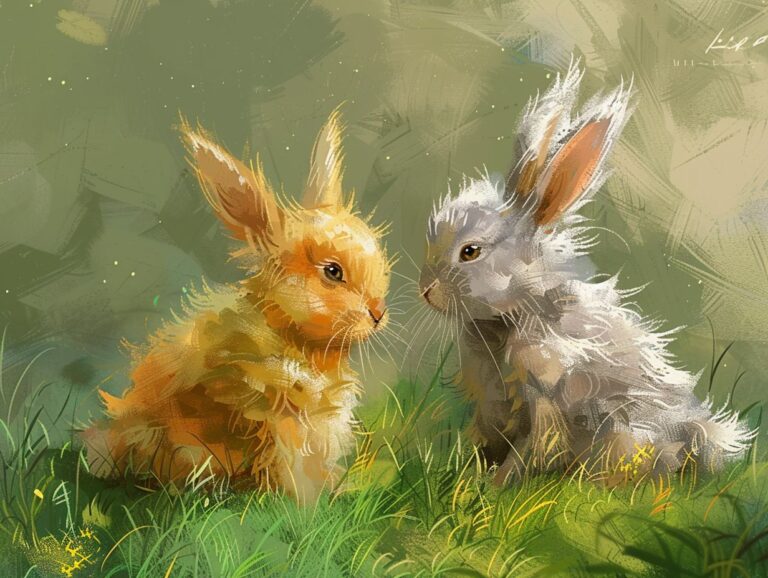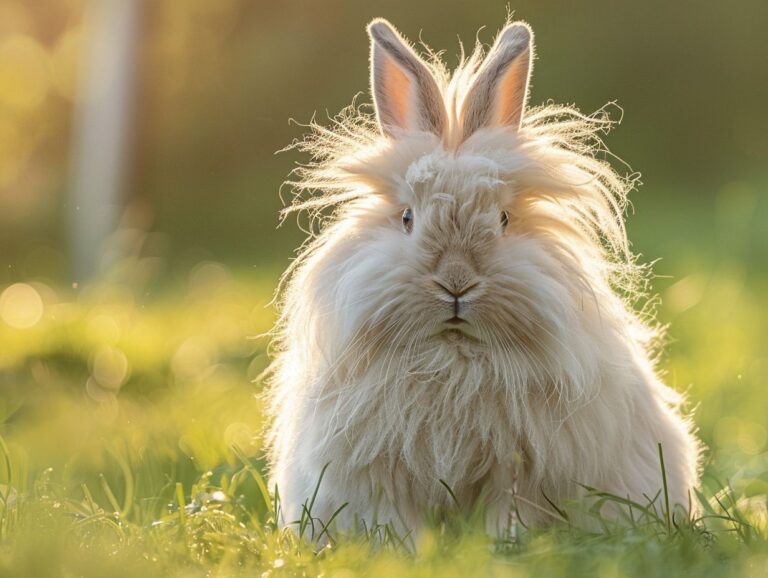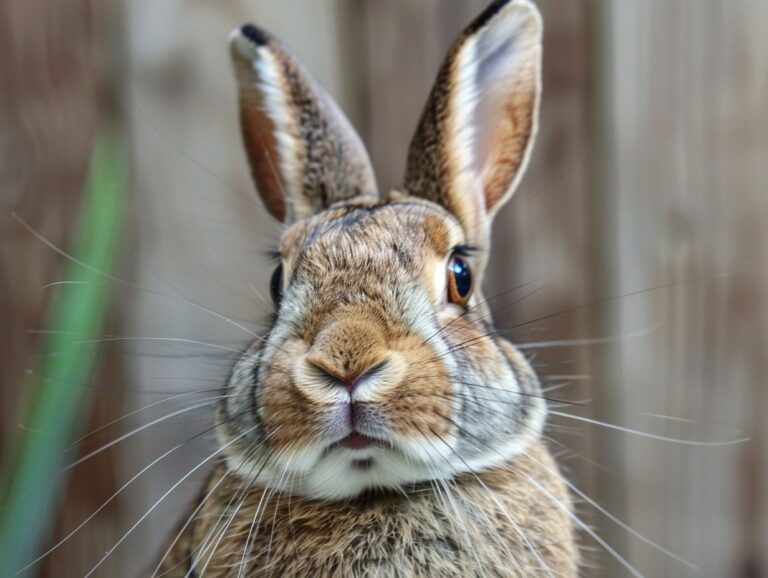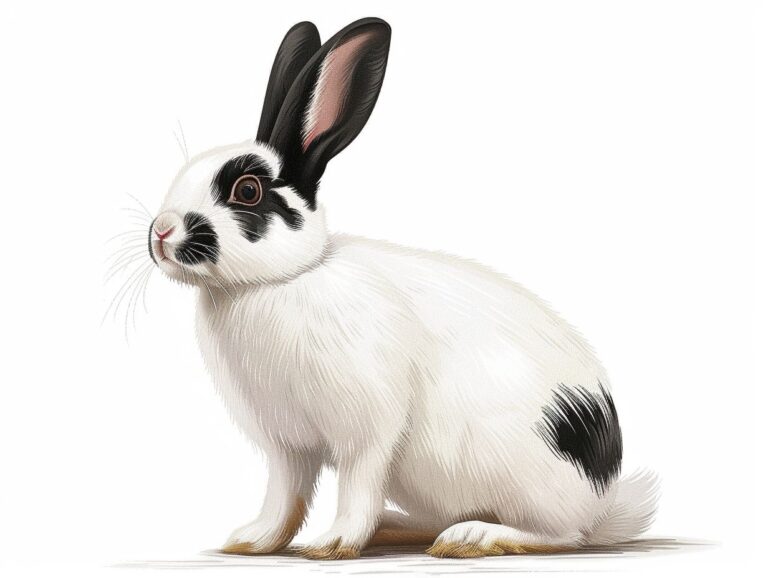Flemish Giant Patagonian Rabbit Breed: Characteristics, Care, History, and Breeding Practices
Curious about the Flemish Giant (Patagonian) Rabbit breed?
In this article, we will explore the characteristics, history, basic care requirements, common health issues, and breeding practices of these gentle giants.
From their impressive size and appearance to their friendly personality and unique care needs, Flemish Giant Rabbits have a lot to offer as pets.
Whether you are a seasoned rabbit enthusiast or a newbie looking to learn more, this comprehensive guide has something for everyone.
Let’s dive in!
Key Takeaways:
What Is the Flemish Giant (Patagonian) Rabbit Breed?
The Flemish Giant, also known as the Patagonian rabbit, is a domestic rabbit breed admired for its large size and gentle temperament. Originating from the Flemish region of Belgium, these rabbits have gained popularity for their unique appearance and calm behavior.
Historically, the Flemish Giant breed was developed for meat and fur production due to its impressive size, with some individuals reaching over 20 pounds. Dating back to the 16th century, Flemish Giants were prized for their utilitarian characteristics. They were later imported to the United States in the late 19th century, where they quickly became sought after as show rabbits.
What Are the Characteristics of Flemish Giant Rabbits?
Flemish Giant rabbits are known for their impressive size, ranging from 13 to 22 pounds, and their striking appearance with a variety of colors such as black, blue, fawn, and white. Plus their size, these rabbits exhibit a gentle temperament, making them suitable as pets for families and individuals alike.
One of the most intriguing aspects of Flemish Giant rabbits is their behavior, which is often described as docile and friendly. These gentle giants are known for their calm demeanor and are generally great with children.
Despite their large size, Flemish Giants are surprisingly graceful and agile, moving with a certain elegance that belies their bulk. Their inquisitive nature often leads them to explore their surroundings with curiosity, further adding to their endearing personality.
Size and Appearance
The size of Flemish Giant rabbits is truly remarkable, as they can reach weights of up to 22 pounds. Their fur comes in various colors like black, blue, fawn, and white, adding to their unique appearance.
These rabbits possess a dense, plush fur that is incredibly soft to the touch, enticing anyone to pet them. The fur of Flemish Giants is often described as luxurious, with a glossy sheen that enhances their regal presence. The color variations in their fur, ranging from deep and dark hues like black to softer shades like fawn, offer a visual feast for the eyes.
Their large size, combined with the luscious texture and striking colors of their fur, make these rabbits stand out in any setting. Whether they are peacefully relaxing or hopping around playfully, Flemish Giants captivate with their majestic fur and charming aesthetics.
Personality and Temperament
Flemish Giant rabbits are known for their gentle and docile nature, making them excellent pets for individuals and families seeking a calm companion. Their temperament is characterized by friendliness and adaptability to different environments.
These rabbits are widely appreciated for their sociable behavior, often forming strong bonds with their human companions. Their gentle demeanor and affectionate nature make them a popular choice for households with children or other pets. Their adaptability shines through in various situations, as they easily adjust to new routines and environments. Flemish Giants have a reputation for being calm and easy to handle, adding to their appeal as family pets.
What Is the History of Flemish Giant Rabbits?
The history of Flemish Giant rabbits traces back to the Flemish region of Belgium, where they were initially bred for their meat and fur. Over time, their popularity grew, leading to their recognition as a distinct breed with unique characteristics and standards.
These rabbits are known for their impressive size, with some individuals reaching weights of over 20 pounds. The breeding of Flemish Giants concentrated not only on size but also on temperament, ensuring they are gentle and docile, making them ideal pets.
Breeders focused on enhancing certain traits like their distinctive coat colors and markings over generations.
The selective breeding practices aimed to maintain the breed’s overall health and robustness, solidifying their status as one of the most recognizable rabbit breeds in the world.
What Are the Basic Care Requirements for Flemish Giant Rabbits?

In terms of grooming, Flemish Giants require regular brushing to keep their dense fur tangle-free and to prevent matting. This practice not only helps maintain their coat’s health but also promotes bonding between the rabbit and the caretaker. Trimming their nails is crucial to prevent overgrowth and potential injuries.
As for their diet, these rabbits should have a diet rich in creme dargent rabbit breed pellets, fresh hay, vegetables, and limited fruits. Monitoring their food intake is essential to prevent obesity, dental issues, and digestion problems. Fresh water should always be available in a clean and accessible manner.
When considering their living space, it’s crucial to provide a large enclosure that allows for both exercise and relaxation. Ideally, the enclosure should have a solid floor to protect their sensitive feet, ample space for hopping and stretching, hiding spots, and good ventilation to maintain air quality.
Housing and Environment
Creating a suitable housing environment for Flemish Giant rabbits is crucial, whether it involves a spacious hutch or a designated enclosure within a 4-H club setting. Providing ample space, proper ventilation, and enrichment activities supports their physical and mental well-being.
When considering the ideal hutch design, ensure it is large enough to allow the rabbit to stretch fully and stand on its hind legs comfortably. The enclosure should be constructed using materials that are safe and non-toxic, with a solid floor to protect their sensitive feet.
An essential aspect of their housing is offering a secure area that protects them from predators and extreme weather conditions. This can be achieved by incorporating wire mesh with small openings to prevent escape and providing shelter from harsh sunlight and rain.
Diet and Nutrition
Maintaining a balanced diet is essential for the health and longevity of Flemish Giant rabbits. Consultation with a veterinarian can help determine the appropriate food choices and nutritional requirements to support their growth and overall well-being.
A high-quality diet for a Flemish Giant rabbit should consist predominantly of hay, such as timothy hay, which provides essential fiber for their digestive system. Supplementing this base with fresh leafy greens like kale, parsley, and romaine lettuce can offer important vitamins and minerals. Pellets formulated specifically for rabbits may be included to ensure they receive a well-rounded mix of nutrients.
Grooming and Hygiene
Regular grooming practices are essential for maintaining the health and hygiene of Flemish Giant rabbits, helping to prevent common health issues such as fur matting and skin irritations. Brushing their fur, trimming nails, and monitoring overall cleanliness are key aspects of their grooming routine.
Flemish Giants have dense, thick fur that requires regular brushing to prevent tangling and matting, which can lead to skin problems and discomfort. Keeping their nails trimmed is crucial to avoid overgrowth, as long nails can cause pain and potentially result in infections. Monitoring their overall cleanliness involves checking for any soiling around the hindquarters and cleaning promptly to prevent urine scald. Proper grooming not only keeps your rabbit looking neat but also contributes significantly to their overall health and well-being.
Exercise and Enrichment
Providing opportunities for exercise and enrichment is vital for the physical and mental well-being of Flemish Giant rabbits. Engaging in playtime, offering interactive toys, and creating a stimulating environment can help support their active nature and overall care.
Exercise is crucial to keep these large rabbits healthy and happy. Regular hopping and running sessions not only maintain their physical fitness but also prevent obesity, which can lead to various health issues. Plus physical activities, mental stimulation is equally important for their well-being. Introducing challenges like obstacle courses or puzzle feeders can engage their curious minds and prevent boredom. By incorporating a variety of activities and toys, you can enrich their environment and enhance their overall quality of life.
What Are the Common Health Issues in Flemish Giant Rabbits?
Flemish Giant rabbits are susceptible to several common health issues, including gastrointestinal stasis, dental problems, and ear mites. Regular veterinary check-ups and proactive care can help prevent and address these health concerns effectively.
For gastrointestinal stasis, one may notice symptoms like reduced appetite, bloating, and lethargy in their Flemish Giant. Providing a high-fiber diet, plenty of hay, and regular exercise can aid in preventing this condition. Dental problems, often manifested through difficulty eating or overgrown teeth, can be managed with appropriate chew toys and professional teeth trimming by a knowledgeable veterinarian. Routine ear inspections and prompt treatment for ear mites are crucial to prevent discomfort and infections in these gentle giants.
Gastrointestinal Stasis

Gastrointestinal stasis is a common health issue in Flemish Giant rabbits, characterized by a slowdown or halt in the digestive system. Symptoms include reduced appetite, bloating, and decreased fecal output, requiring prompt veterinary intervention to prevent complications.
Several factors can contribute to gastrointestinal stasis in Flemish Giant rabbits, such as a diet lacking in fiber, stress, dental issues, and dehydration. Rabbits with underlying dental problems may struggle to properly chew their food, which can disrupt the digestive process. To learn more about the American rabbit breed and its characteristics, care, history, and breeding practices, click here.
Early signs of gastrointestinal stasis can include changes in behavior, such as lethargy and reluctance to move. As the condition progresses, rabbits may exhibit signs of discomfort, including teeth grinding and a hunched posture.
Treatment for gastrointestinal stasis typically involves a multi-faceted approach, including fluid therapy to correct dehydration, pain management, gastrointestinal motility medications, and syringe feeding critical care formula to provide essential nutrition.
Dental Problems
Dental problems, such as overgrown teeth and malocclusion, are common concerns in Flemish Giant rabbits. These issues can affect their ability to eat and lead to discomfort, highlighting the need for regular dental checks and appropriate dental care.
In Flemish Giant rabbits, overgrown teeth can be caused by a diet lacking in proper chewing outlets like hay and tough vegetables. Malocclusion, where the teeth do not align correctly, may be due to genetics or trauma. Symptoms of dental issues include drooling, reduced appetite, and weight loss. To manage these problems, providing ample opportunities for chewing, regular vet check-ups, and potential dental trims are crucial. Neglecting dental health can lead to serious health issues affecting overall well-being.
Ear Mites
Ear mites infestations can occur in Flemish Giant rabbits, leading to discomfort, itching, and ear inflammation. Regular ear checks, prompt treatment, and preventive measures can help manage and prevent ear mite infestations effectively.
One of the primary causes of ear mites in Flemish Giant rabbits is typically poor hygiene or exposure to environments with an abundance of mites. Common symptoms include head shaking, scratching of ears, and a dark, waxy discharge from the ears. Without proper attention, these issues can escalate to more severe rabbit breed concerns like ear infections.
When treating ear mites, it’s crucial to consult a veterinarian for appropriate medication and cleaning solutions tailored to rabbits. Maintaining a clean living environment and regular grooming practices are essential to prevent future infestations.
How Can Flemish Giant Rabbits Be Bred?
Breeding Flemish Giant rabbits requires careful selection of breeding stock, adherence to established standards set by organizations like the American Rabbit Breeders Association (ARBA), and proper management of mating, pregnancy, and newborn kit care.
When selecting breeding stock for Flemish Giants, it’s essential to look for individuals that exemplify the breed’s characteristics such as large size, sturdy build, and distinctive fur color. Quality breeding rabbits often come from reputable breeders known for producing healthy and genetically sound animals.
In terms of breeding protocols, it’s crucial to ensure that mating pairs are compatible and monitored closely during the breeding process to maximize successful outcomes. Postnatal care involves providing a warm, clean environment for newborn kits, ensuring they receive adequate nutrition from their mother’s milk, and monitoring their growth and development.
Selecting Breeding Stock
The process of selecting breeding stock for Flemish Giant rabbits involves evaluating traits like size, fur quality, and temperament to maintain breed standards outlined by organizations such as the American Rabbit Breeders Association (ARBA).
When choosing breeding stock, it is crucial to consider not only the immediate characteristics but also the long-term genetic diversity within the population. By prioritizing breed standards, breeders ensure that their rabbits possess the desired physical attributes and conform to the recognized norms established by ARBA. Genetic diversity plays a vital role in reducing the risk of hereditary health issues and promoting overall population resilience.
Mating and Pregnancy
Understanding the mating and pregnancy process in Flemish Giant rabbits is essential for successful breeding outcomes. Proper management of mating pairs, gestation periods, and birthing procedures ensures the health and well-being of both the does and their offspring.
Female Flemish Giants typically reach sexual maturity around 5-6 months of age, while males can be ready for breeding as early as 4 months. The mating pair should be introduced carefully to prevent aggressive behavior that may lead to injuries.
During pregnancy, providing a quiet and stress-free environment for the doe is crucial. A well-balanced diet rich in fiber, fresh hay, and fresh water should be maintained to support the doe’s health and the development of her growing litter. Learn more about Argente rabbits breed characteristics, care, history, and breeding practices.
As the Doe’s due date approaches, ensuring a secluded nesting box filled with soft bedding can help her prepare for birth. Monitoring the doe closely during labor and providing assistance if needed can improve the chances of a successful birthing process, ultimately leading to healthy newborn rabbits.
Caring for Newborn Kits

Ensuring the doe is well-fed with a balanced diet during pregnancy is crucial as it impacts the health of the offspring.
Proper nutrition post-birth involves feeding the doe a high-quality mix of fresh hay, vegetables, and commercial rabbit pellets for optimal milk production.
Newborn kits should be kept warm, away from drafts, in a quiet area to reduce stress. Regularly weigh the kits to track their growth progress. Address any concerns promptly by consulting a veterinarian who specializes in rabbit care.
Maternal care plays a significant role in the survival of the kits, as the doe provides warmth, cleaning, and feeding. Gentle handling and observation are essential to ensure bonding between the mother and her offspring. It’s important to monitor the doe’s behavior and health post-delivery to address any potential complications early.
By following these practices, breeders can help ensure the well-being and proper development of Flemish Giant rabbit kits.
Frequently Asked Questions
What is the Flemish Giant (Patagonian) Rabbit breed?
The Flemish Giant (Patagonian) Rabbit is a breed of domestic rabbit known for its large size and friendly demeanor.
What are the characteristics of the Flemish Giant (Patagonian) Rabbit?
The Flemish Giant (Patagonian) Rabbit can weigh between 13-14 lbs and reach lengths of up to 2 feet, making it one of the largest rabbit breeds. They come in a variety of colors, including black, blue, fawn, and white.
How should I care for a Flemish Giant (Patagonian) Rabbit?
Flemish Giant (Patagonian) Rabbits require a large living space and a diet high in fiber. They also need regular grooming, including brushing and nail trimming. It’s important to socialize and interact with your rabbit daily to ensure their mental and physical well-being.
What is the history of the Flemish Giant (Patagonian) Rabbit?
The Flemish Giant (Patagonian) Rabbit originated in Belgium in the 16th century, where it was bred for its meat and fur. It was later introduced to the United States in the early 20th century and has since become a popular show and companion rabbit.
Can I breed Flemish Giant (Patagonian) Rabbits?
Yes, Flemish Giant (Patagonian) Rabbits can be bred, but it’s important to do so responsibly. Breeding should only be done by experienced and knowledgeable individuals to ensure the health and well-being of the rabbits and their offspring.
What are some breeding practices to keep in mind for Flemish Giant (Patagonian) Rabbits?
When breeding Flemish Giant (Patagonian) Rabbits, it’s important to choose healthy and genetically diverse rabbits to prevent health issues in the offspring. It’s also crucial to provide proper care and nutrition for both the mother and babies during and after the pregnancy.

